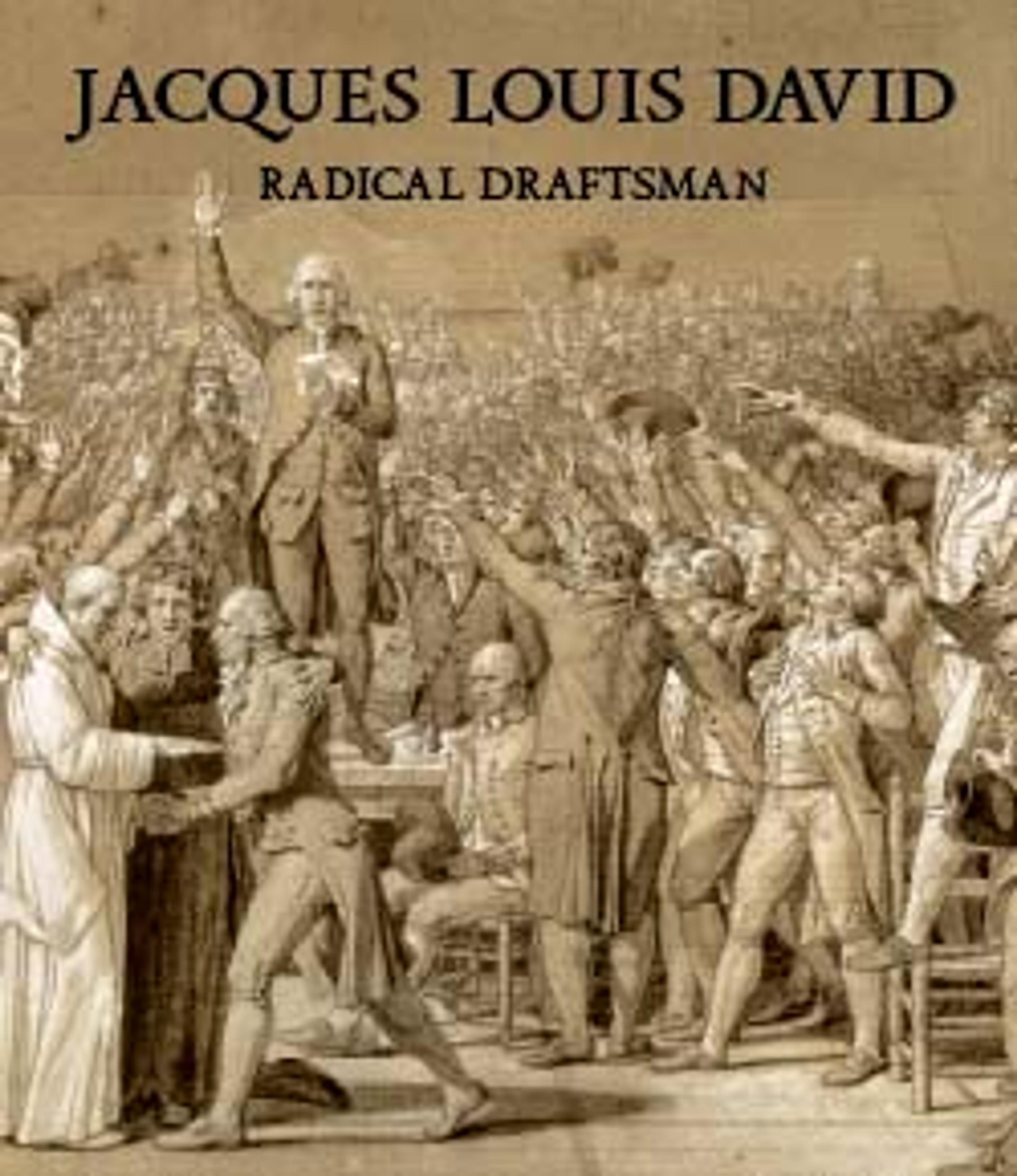Louis XVI as the Benefactor of Surgery
Born and trained in Aix-en-Provence, Gibelin spent a decade in Rome where he made a special study of the monochrome frescoes of Polidoro da Caravaggio. Returning to France in 1771, he received a major commission for the decoration of the interior of the new building of the Ecole de Chirurgie, designed by Jacques Gondouin (1737-1818) and still under construction. For the centerpiece of the décor, Gibelin was commissioned to fresco a long grisaille frieze for the wall over the entrance of the new amphitheater, a five hundred seat hemicycle with a half oculus above.
Gibelin’s design, as seen here, celebrated royal patronage of the school for surgeons and was divided into three sections. On the left, amid an ongoing battle, doctors are cast as war-time heroes, assisting the wounded on the battlefield, tying bandages around their wounds to staunch the bleeding. In the center, the French king (Louis XV at the time Gibelin received the commission, but Louis XVI by the time he completed it) in the guise of a Roman emperor is seated before a grateful crowd as a winged figure descends from the sky to place a crown of hearts atop his head. The crowds around him mix classical figures and attributes with others in contemporary dress, including the young medical students at left, one of whom holds a book and another an anatomical drawing. On the right, the ancient Greek god of medicine, Asclepius, directs a dissection as older bearded men in classical attire listen attentively and take notes.
The building, with its imposing neoclassical edifice, garnered much attention as it went up. Hubert Robert painted a view of it under construction, with scaffolding and blocks of stone littering its courtyard (Musé Carnavalet, Paris). Gabriel de Saint-Aubin depicted the interior of the amphitheater, with Gibelin’s fresco in place, on at least three occasions, including a large watercolor of Louis XVI laying its symbolic foundation stone (Musée Carnavalet, Paris).
After the building’s completion in 1774, the architect, Gondouin commissioned engravings to document the space and its décor, with explanations elaborating the iconography. They were published as Description des Ecoles de Chirurgie, dédiée à Monsieur de la Martinière in Paris in 1780. It is not known whether Gibelin’s frescos were mutilated during the revolutionary period, but in 1796, only 22 years after they were made, they were badly damaged in a storm, during which rain entered the room through the oculus.
Perrin Stein (December, 2017)
Gibelin’s design, as seen here, celebrated royal patronage of the school for surgeons and was divided into three sections. On the left, amid an ongoing battle, doctors are cast as war-time heroes, assisting the wounded on the battlefield, tying bandages around their wounds to staunch the bleeding. In the center, the French king (Louis XV at the time Gibelin received the commission, but Louis XVI by the time he completed it) in the guise of a Roman emperor is seated before a grateful crowd as a winged figure descends from the sky to place a crown of hearts atop his head. The crowds around him mix classical figures and attributes with others in contemporary dress, including the young medical students at left, one of whom holds a book and another an anatomical drawing. On the right, the ancient Greek god of medicine, Asclepius, directs a dissection as older bearded men in classical attire listen attentively and take notes.
The building, with its imposing neoclassical edifice, garnered much attention as it went up. Hubert Robert painted a view of it under construction, with scaffolding and blocks of stone littering its courtyard (Musé Carnavalet, Paris). Gabriel de Saint-Aubin depicted the interior of the amphitheater, with Gibelin’s fresco in place, on at least three occasions, including a large watercolor of Louis XVI laying its symbolic foundation stone (Musée Carnavalet, Paris).
After the building’s completion in 1774, the architect, Gondouin commissioned engravings to document the space and its décor, with explanations elaborating the iconography. They were published as Description des Ecoles de Chirurgie, dédiée à Monsieur de la Martinière in Paris in 1780. It is not known whether Gibelin’s frescos were mutilated during the revolutionary period, but in 1796, only 22 years after they were made, they were badly damaged in a storm, during which rain entered the room through the oculus.
Perrin Stein (December, 2017)
Artwork Details
- Title: Louis XVI as the Benefactor of Surgery
- Artist: Esprit Antoine Gibelin (French, Aix en Provence 1739–1813 Aix en Provence)
- Date: 1771–74
- Medium: Pen and black ink, brush and gray wash, over black chalk underdrawing
- Dimensions: Sheet: 15 3/8 × 75 3/16 in. (39 × 191 cm)
- Classification: Drawings
- Credit Line: Purchase, Mary Oenslager Fund and funds from various donors, 2018
- Object Number: 2018.832
- Curatorial Department: Drawings and Prints
More Artwork
Research Resources
The Met provides unparalleled resources for research and welcomes an international community of students and scholars. The Met's Open Access API is where creators and researchers can connect to the The Met collection. Open Access data and public domain images are available for unrestricted commercial and noncommercial use without permission or fee.
To request images under copyright and other restrictions, please use this Image Request form.
Feedback
We continue to research and examine historical and cultural context for objects in The Met collection. If you have comments or questions about this object record, please contact us using the form below. The Museum looks forward to receiving your comments.
